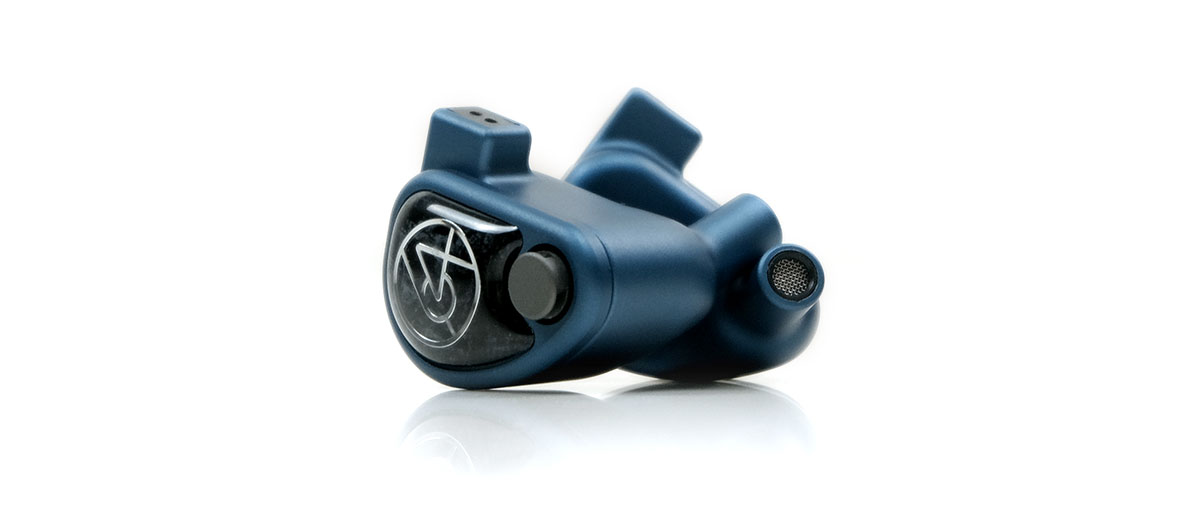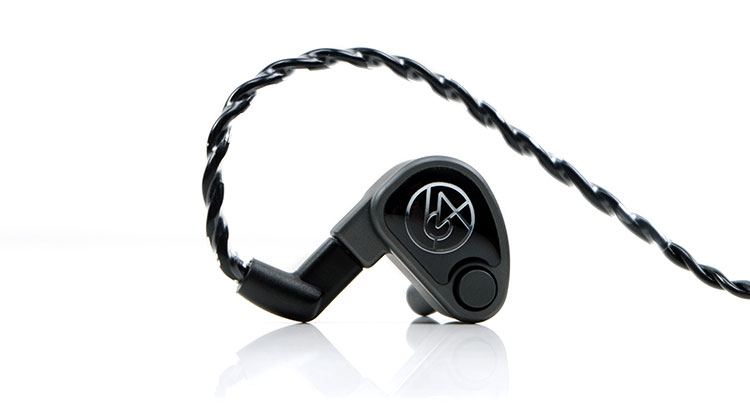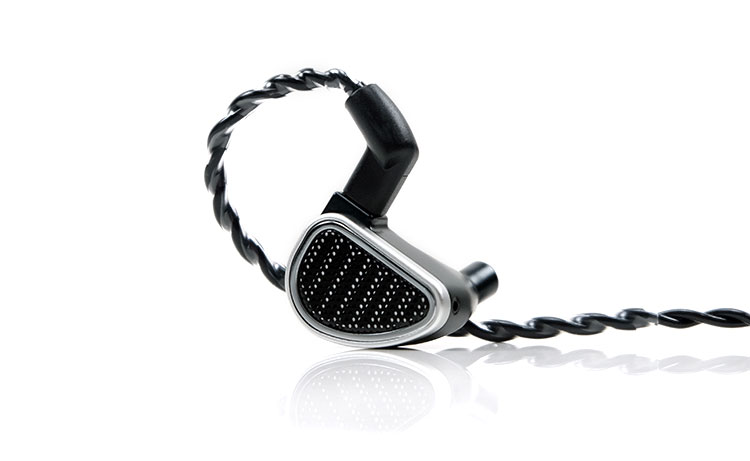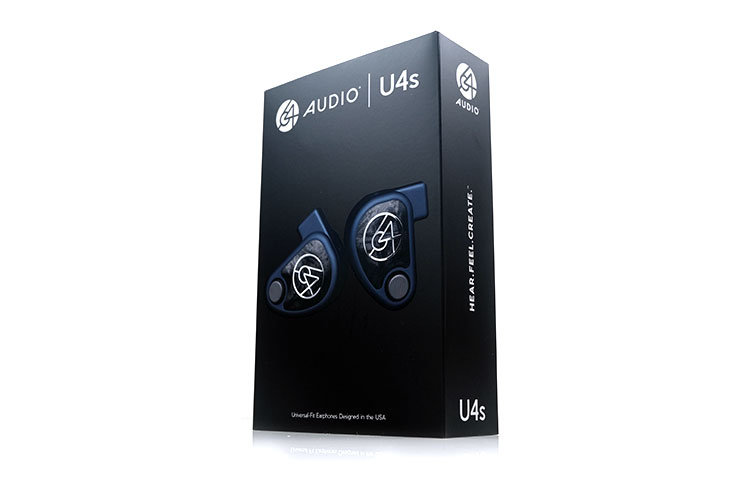Select Comparisons
64 Audio U4 SE
$749, Now discontinued
The U4 SE was launched around 2017 about a year after the original U4. It was designed to be a more balanced tuning than the original with a bit more emphasis on detail and clarity.
Technical
The U4 SE is sort of a precursor of the direction 64 Audio was going so it has some of the U4s features but not all of them and some drastic changes also.
Probably the biggest difference is the switch from an all-BA driver setup inside the U4 SE to the hybrid tia, BA, and dynamic driver configuration in the U4s. That is going to bring a very different blend of driver timbre, enhanced treble, and a deeper bass response.
Both monitors use passive 4-way crossovers though I am not 100% sure the electrical low pass filter is present in the U4 SE. They also feature apex technology though at the time the U4 SE only came with the -20dB m20 filter whereas the U4s comes with all 4 options including the new m12 -12dB module.
The U4 SE did not ship with any LID or tia technology so impedance mismatching is possible on outputs with a high impedance and it uses a dual bore nozzle design as opposed to the U4s’s single wide bore.
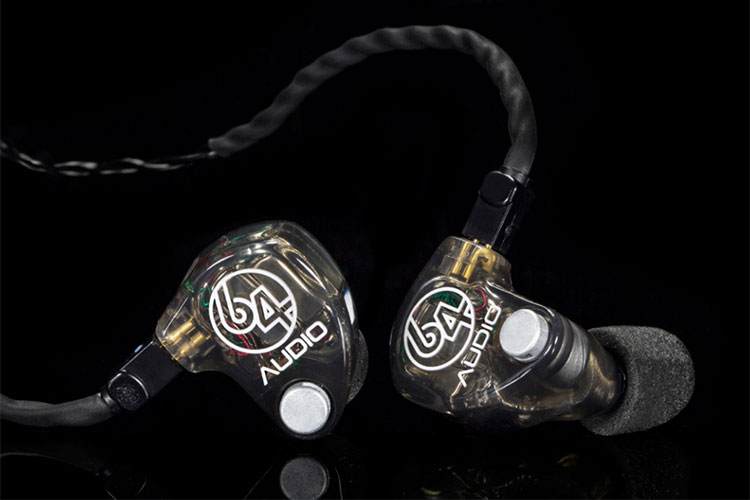
Design
Clearly a huge upgrade in the design with the U4s over the older U4 SE. Instead of hypoallergenic acrylic shells in translucent charcoal color, we have a solid blue slate-finished aluminum alloy smoothly curved and completed with that patterned faceplate.
The only advantage the U4 SE design has is its volumetric size being lighter and shallower from the use of acrylic over metal and BA drivers instead of a hybrid design that includes a larger dynamic driver.
A peek down into the two nozzles will show a mesh guard inside the U4s compared to an exposed dual bore inside the U4 SE so dirt will be a lot easier to clean off from the newer design compared to the older version.
Despite being a hybrid, I actually found the passive isolation better from the U4s using the M15 and the large SpinFit silicone fitting compared to the U4 SE with the same tips and the m20 module inserted.
This could well be anecdotal based on my ear shape but definitely, a lot of higher-frequency background noise creeping in during my use of the U4 SE.
The U4s cable destroys the older U4 SE cable. It has a bigger gauge, lower resistance, and a superior finish. No question the newer Premium cable will give you a much better performance in terms of dynamic range and volume.
Performance
The most obvious difference between these two monitors using the same M15 apex module is the tia high performance combined with the switch to the dynamic driver in the U4s.
The U4 SE bass tuning magnitude is higher throughout but it has that BA-type of slam so the volume is greater but the impact is slightly softer at the same time. The U4s dynamic driver’s impact is a bit firmer and it also delivers better-defined sub-bass notes to my ear.
One of the factors behind the easier pickup of the bass layering and definition in the U4s is the stronger lower-mids scoop around 400Hz-800hz that prevents bleed and bloom. The U4 SE remains comparatively elevated bringing some enhanced warmth and bloom into the performance.
The U4s’ tia highs bring a lot more headroom to its presentation as well as a better perception of detail and upper staging presence for subtle spatial cues. It sounds taller than the U4-Se with a stronger presence in the upper mids and the treble 8k range.
That tia difference tweaks the comparative timbre for me. The U4 SE draws more from the low-end warmth and bloom creating a soft but more fulsome midrange tone to both instruments and vocals whereas the U4s’ greater top-end presence shifts the timbre more toward neutral to natural.
You can pick up on the additional treble overtone in the slightly cleaner and more energetic vocal and percussion timbre notes and it also helps cast a light on upper treble notes that may not be as easily picked up on the darker U4 SE presentation.
64 Audio U6t
$1299
The U6t was launched in mid-2021 and was a refresh of the original universal U6 launched in 2016 and packed with an updated feature set of 64 Audio’s latest technology. You can read our full review of the U6t by clicking here.
Technical
The U6t has an all-BA driver design as opposed to the U4s’s hybrid setup though both use a tia driver for the highs. The rest of the driver makeup for the U6t is a dual BA for the lows instead of a single dynamic, 2 for the low-mids instead of one, and both monitors using a mid-high BA driver.
This is neatly threaded together using a similar integrated 4-way passive crossover and a fairly easy-to-drive impedance rating of 10Ω and 108dB SPL which is not too far off the 11Ω and 107 dB rating of the U4s.
Both monitors share the three key acoustical performance pitches of tia, LID, and apex. There are some minor differences though with the U6t including an acoustical chamber for tia whereas the U4s does not, and the U4s includes the new m12 -12dB module whereas the U6t is listed as only having the original 3 modules.
I believe both share the same cable though in our original U6t review the cable was listed as exclusive so not entirely sure if that pitch had faded away and the cable is now the new ‘stock’.
In any event, both are 26AWG silver-plated OCC copper cables with a 0.23Ω resistance rating and terminated in 64 Audio’s branded low-profile barrels, 2-pin connectors, and 3.5mm SE plugs.
Design
They actually share an identical design approach but where they differ is where my preference lies and that is in the final aesthetic.
Everyone loves a black finish in audio for some reason but I have always enjoyed a brighter color scheme in my portable audio so the U4s Blue Slate finish and more intricate face plate get my vote.
Aside from that, both monitors use a similar aluminum shell material with smooth cornering and a stubby thick connector stem to the rear. These are sturdy finishes and should be able to take a knock or two during use.
Volumetrically I can’t find a difference in either their sizing or their weight so they both will give you a similar comfortable fit in the ear and perhaps surprisingly, a similar passive isolation performance.
I was expecting the U6t to be the better of the two due to the lack of venting but it did not seem to be much of a factor here. Since you get a similar set of tips the performance from the nozzle end will be more or less identical.
Performance
The U4s gives the U6t a run for its money with a similar ballpark-colored and weighty tuning. The key differences focus on how the tia high is tuned between these two, the additional driver in the U6t mids, and the BA versus dynamic driver on the lows.
For a start, the U4t weight and slam on the sub-bass is superior whereas the U6t magnitude is high but with that politer BA delivery it is excellent on volume but not quite as well-defined. Bass to mids separation is also more noticeable on the U4s.
There is also a little bit more warmth in the upper bass and lower mids of the U6t, perhaps some better presence and texture also with that additional BA driver. The U4s lower mids sound comparatively thinner though for some genres and sparser mixes such as R’n’B you might notice it a bit less.
Mids on the U6t have a more rounded denser and slightly warmer tone. I suspect the main factor here is the comparatively softer and more relaxed treble response from the U6t’s tia high.
From about 5-10k it is more attenuated whereas the U4s has a stronger peak around 8k. You get a slightly leaner and brighter note in the U4s upper mids and more contrast in both the mids and treble timbre. It’s not a brittle sound, nor do I find it harsh, but certainly more neutral in coloration compared to the U6t.
I actually rate the U4t as offering a larger soundstage with more depth and perceived height whereas the U6t brings it in a bit offering a more intimate alternative. The U6t is stronger on the lower mids and vocal presence but doesn’t have the same airy highs as the U4s.
64 Audio Duo
$1199
The 64 Audio Duo is one of the company’s more unique creations and until the launch of the U4s, it was the most affordable entry into their current universal monitor line-up. You can read about the Duo in more detail here.
Technical
The Duo is perhaps the most radically different monitor from the U4s. Internally, this is a dual hybrid driver monitor as opposed to the quad driver U4s. It features a 9mm dynamic driver with a single tia high open balanced armature driver implementation.
There are no ‘regular’ BA drivers so the dynamic driver covers both the lows and the mids and the tia for the highs with an integrated 2-way passive crossover as opposed to 4-way inside the U4s.
The Duo is a bit less sensitive also compared to the U4s at 9Ω and 98dB SPL compared to 11Ω and 107 dB though, in truth, both will be fine on a decent DAP in low gain, just a bit of a volume gap between them to adjust for.
Perhaps the most significant difference is the acoustical structure of the Duo which uses an open-back design as opposed to the U4s closed monitor setup. This will bring a completely different staging presentation to the Duo.
The Duo also does not use the U4s swappable apex system or even a fixed m15 inside similar to the tia Trio. Rather it leverages the perforated open-back grill design to do away with obstructed airflow issues.
Design
Some design differences with the Duo using an elegant perforated open back plate design and no swappable apex filter technology. The U4s follows the standard apex module-dominated form factor from the U6t but with the flashier blue slate and patterned face plate finish.
Both have their pros and cons with the U4s being the heavier and deeper of the two shells whereas the Duo is much lighter and shallower but also a little longer on the face plate side. You will also note the connector stem on the back of the Duo is much shorter compared to the U4s version.
I would rate the lighter Duo as the slightly comfier of the two in the ear due to its lighter weight but oh boy much less isolation.
Not totally open like a typical headphone but rather rated at a fixed -12dB so on the same level as the new m12 apex module. If you are using the m15 or the m20 on the U4s you will have super levels of passive isolation.
Both the Duo and the U4s share the same 48″ 4-wire 26AWG silver-plated OCC copper Premium cable so the handling and performance will be the same on each. Just a matter of personal preference in how well they pair together with each IEM.
Performance
The Duo is more V-shaped and expansive with the U4s more balanced and articulate in their respective tuning though both have a fairly deep and elevated low-end.
A few differences stand out with the obvious being the Duo’s greater staging dimensions with that open-back design. In particular, a wider stereo image compared to the narrower U4s presentation.
On the low end, I was expecting the Duo to have a bit more power but in actual fact, it’s a ‘pillowy’ and slightly softer presentation with the U4s the tighter and more dynamic of the two below 80Hz.
You could argue there is more amplitude on the Duo bass, certainly more bloom and warmth but it lacks the aggression and pace of the U4s dynamic driver tuning.
The U4s dynamic driver only has to focus on the lows whereas the Duo dynamic equivalent has to cover the mids also. The U4s’s multi-BA arrangement for the mids does give it an edge in clarity and articulation.
It’s a slightly leaner tone with more of an upper-mid lift but also a drier pacier delivery compared to Duo’s more rounded dynamic driver texture and timbre.
Imaging is more complex on the U4s mids, narrower in staging width compared to the Duo but more intricate and resolving. Vocals on both are forward, but more so on the Duo. There is a slight suck out from 4-5k also on the Duo whereas the U4s remains elevated picking up a bit more energy as a result for percussion notes.
The Duo does deliver more headroom as you might expect but the treble aggression is not that forceful. Like an open-back headphone in a way, there is less of a wall to the staging, so it casts an almost grandiose sensation but never feels artificially wide or tall.
Our Verdict
The 64 Audio U4s is a huge step up on my older U4 SE 4-driver model. The introduction of the dynamic driver and the tia highs not only improves the dynamic range and the level of headroom in its staging performance considerably but also gives more expensive models in the 64 Audio lineup such as the Duo and the U6t a serious run for their money.
This is a hybrid with plenty of power and plenty of sub-bass, but also one that avoids sounding muddy and bloated. It has an impressive level of clarity through the mids and highs with the only detraction being a slight lack of body and texture through the lower mids.
Discerning bassheads should enjoy this, it is tailor-made for EDM and modern R’n’B. However, don’t rule the U4s either simply as an audiophile. With the apex filtering you can tweak it to an almost neutral presentation if so desired so it is much more flexible than you might think.
64 Audio U4s Technical Specifications
- Driver Type 2 balanced armature drivers, 1 tia driver, and 1 dynamic driver
- Driver Configuration 1 dynamic low, 1 BA low-mid, 1 BA high-mid, 1 tia high
- Frequency Response 10Hz – 20kHz
- Sensitivty 107 dB/mW @ 1kHz @ 1mW (94mV)
- Impedance 11Ω @1kHz
- Crossover Integrated 4-way passive crossover
Isolation
- -20dB w/ m20 module
- -15dB w/ m15 module
- -12dB w/ m12 module
- -10dB w/ mX module
Cable
- 0.23Ω total impedance
- 7 x 7 x 4 Multi-twist
- Silver-plated OCC copper wire 26 AWG

